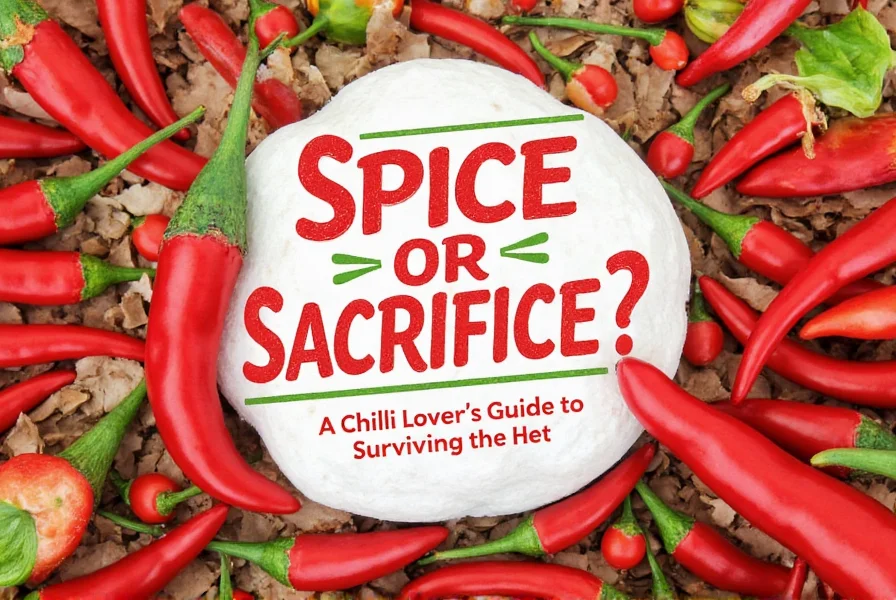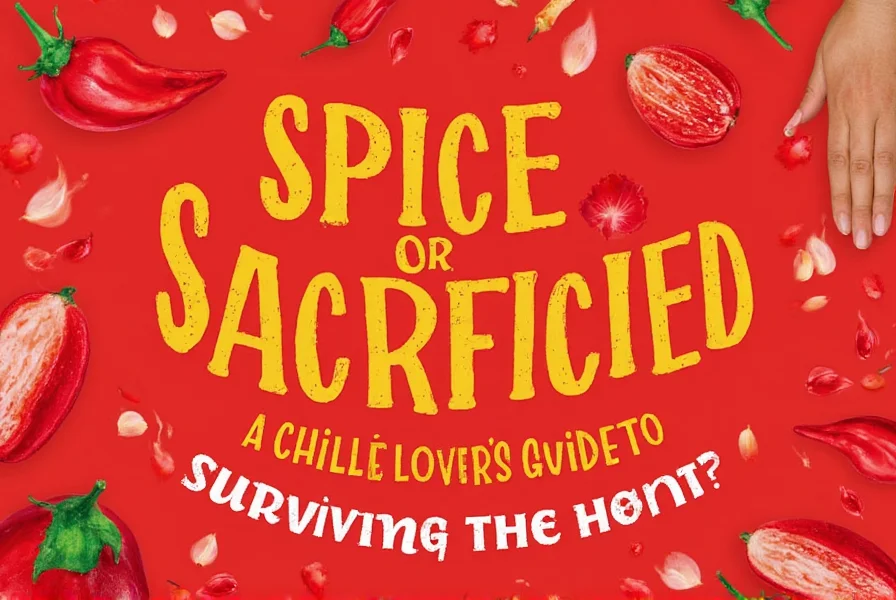When handling chillies, the key to controlling heat is understanding capsaicin concentration and using proper techniques. Remove seeds and white membranes where capsaicin is most concentrated, wear gloves to prevent skin irritation, and use dairy products like milk to neutralize burns. This guide provides actionable steps for safely managing chilli heat in cooking.
What Determines a Chilli's Spice Level?
At the heart of every spicy sensation lies capsaicin, the compound that triggers pain receptors in your mouth. Here's how it works:
- Variety: Different chilli species naturally contain varying capsaicin levels (e.g., bell peppers have 0 SHU while Carolina Reapers exceed 2 million SHU).
- Growing Conditions: Stress factors like drought or intense sunlight increase capsaicin production as a defense mechanism.
- Plant Parts: Seeds and white membranes contain 80-90% of the heat, not the flesh itself.
- Maturity: Fully ripe chillies typically develop higher capsaicin levels than unripe green ones.
The Scoville Scale: Science Behind the Heat
Developed in 1912 by Wilbur Scoville, this measurement system quantifies capsaicin concentration in Scoville Heat Units (SHU). Modern labs use HPLC testing for precision, replacing the original subjective taste test:
| Chilli Name | Scoville Heat Units (SHU) | Common Uses | Flavor Notes |
|---|---|---|---|
| Bell Pepper | 0 | Salads, stuffing | Sweet, crisp |
| Jalapeño | 2,500–8,000 | Salsas, nachos | Grassy, slightly smoky |
| Hatch Green Chile | 1,000–8,000 | Stews, sauces | Earthy, mild to hot depending on roast |
| Serrano | 10,000–23,000 | Pico de gallo, soups | Crunchy, bright heat |
| Cayenne | 30,000–50,000 | Spice blends, soups | Sharp, earthy |
| Habanero | 100,000–350,000 | Hot sauces, marinades | Fruity, floral |
| Ghost Pepper (Bhut Jolokia) | 1,000,000+ | Extreme spice challenges | Smoky, floral |
| Carolina Reaper | 1,400,000–2,200,000 | World records, dares | Sweet, then brutal |
Proven Methods to Control Chilli Heat
Follow these evidence-based techniques for safe handling and precise heat control:
- Glove usage: Always wear nitrile gloves when handling hot chillies to prevent capsaicin transfer to sensitive areas.
- Seeds and membranes removal: Use a small spoon to scrape out white pith where capsaicin concentrates.
- Dairy neutralization: Casein in milk proteins binds to capsaicin molecules, effectively reducing burn (water spreads the oil).
- Acid balancing: Add lime juice or vinegar to counteract excessive heat without diluting flavor.
- Gradual addition: Start with 1/4 of your intended chilli amount, taste, then incrementally add more.

Advanced Cooking Techniques
Maximize flavor while managing heat with these professional methods:
- Roasting whole chillies: Dry-roast before use to deepen flavor complexity while reducing sharpness by 20-30%.
- Infusion timing: Add whole chillies early in slow-cooked dishes for gradual heat release, or add ground chillies near the end for sharper flavor.
- Sweetness pairing: Balance extreme heat with honey or fruit (e.g., mango-habanero sauce) to create complex flavor profiles.
Frequently Asked Questions
What exactly makes chillies spicy?
Capsaicin is the active compound that binds to TRPV1 receptors in your mouth, triggering a pain response interpreted as heat. This chemical defense mechanism evolved to deter mammals from eating the fruit while allowing birds (which don't have these receptors) to disperse seeds.
How can I reduce the heat of a chilli that's too spicy?
For finished dishes: Add dairy (yogurt, sour cream), fats (butter, oil), or sugar to bind capsaicin. For raw chillies: Remove seeds and white membranes before use. Never use water alone as it spreads the oil.
Why do some people tolerate spicy food better than others?
Genetic variations in TRPV1 receptor sensitivity affect heat perception. Regular consumption builds temporary desensitization, but the effect reverses after 2-3 weeks without spicy food. Cultural exposure also plays a role in developing tolerance.
Does cooking affect a chilli's heat level?
Short-term cooking intensifies heat by releasing capsaicin oils, while prolonged cooking (over 30 minutes) breaks down 15-25% of capsaicin. Drying concentrates heat by removing water content, while roasting mellows sharpness while enhancing smoky notes.
Science-Backed Chilli Facts
- Myth: Spicy food causes ulcers
Fact: Capsaicin may actually protect against ulcers by killing H. pylori bacteria and stimulating mucus production. - Fact: Birds cannot taste capsaicin due to different TRPV1 receptor structure, making them ideal seed dispersers.
- Fact: The "chilli high" from endorphin release is scientifically documented, with studies showing 20-30% of regular consumers experience this natural painkiller effect.











 浙公网安备
33010002000092号
浙公网安备
33010002000092号 浙B2-20120091-4
浙B2-20120091-4